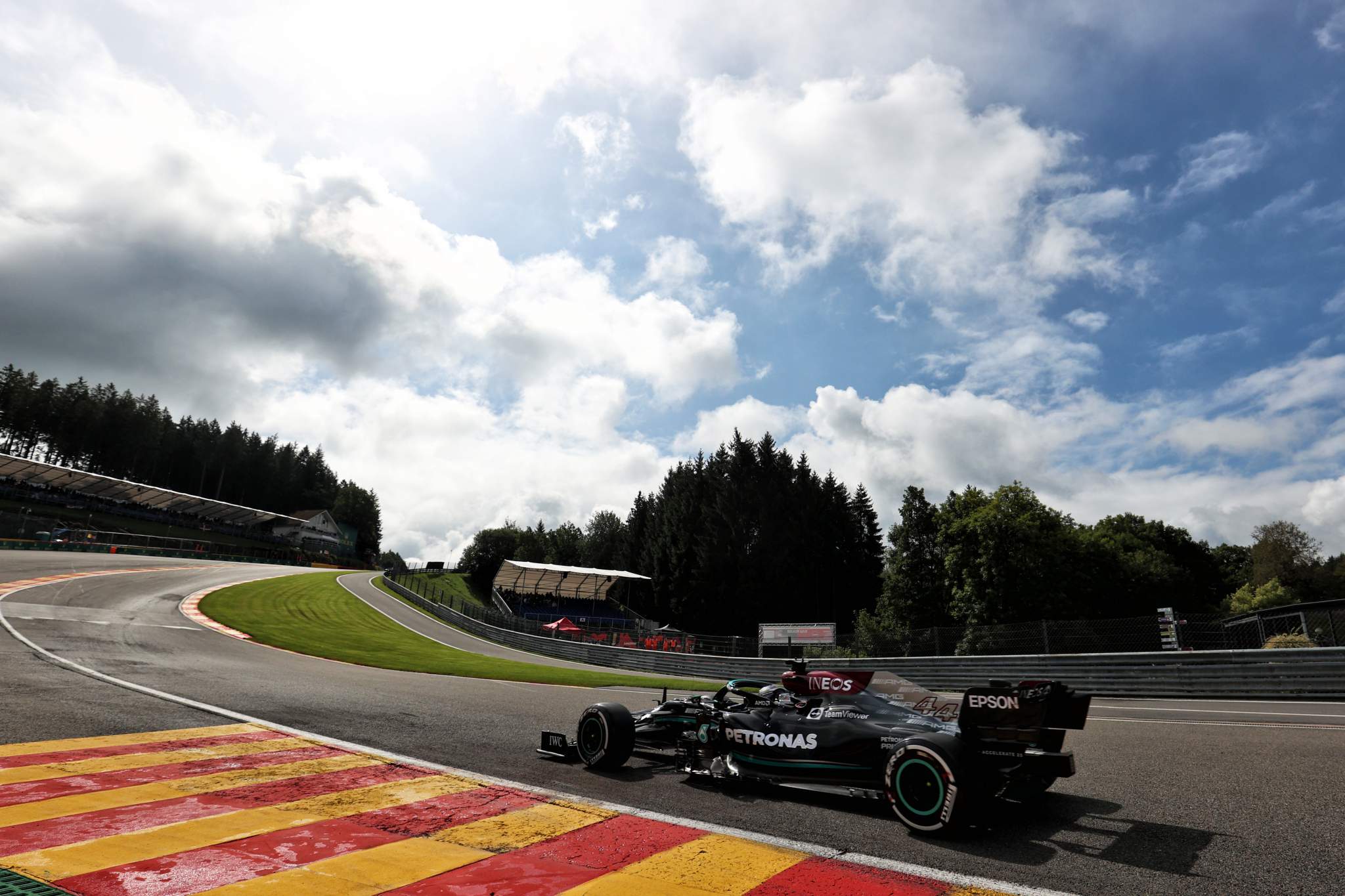Up Next

The risks of Eau Rouge and Raidillon have felt particularly prominent for Formula 1 and its support races since 2019 and Anthoine Hubert’s fatal accident.
Hubert was killed two years ago in a Formula 2 support race at the Belgian Grand Prix after he crashed exiting Raidillon and his car was T-boned by Juan Manuel Correa’s as it rebounded from the barriers into the run-off area.
That crash has not been far from anybody’s thoughts at F1’s subsequent returns to Spa. Any sense of apprehension would have been heightened for this year’s race by the horrible Spa 24 Hours crash in which Williams F1 reserve Jack Aitken was involved in a multi-car accident at Raidillon that left him and Davide Rigon in hospital.
Aitken suffered a broken collarbone, a fractured vertebra and a very small lung contusion in his crash. On Friday at the 2021 Belgian GP, several W Series competitors were fortunate to escape serious injuries of their own after a violent multi-car qualifying shunt.
The six cars went off one-by-one up Eau Rouge as rain started to hit the dry track, and the cars then ricocheted into one another as they rebounded off the barrier which is in such close proximity to the edge of the circuit.
Worryingly, that is what binds the Hubert crash, the Spa 24 Hours crash and the W Series crash. It is not ‘it happened at Eau Rouge’, it’s that the layout of the run-off and barriers left drivers vulnerable after their initial crash and they were hit by other cars in the run-off – which is so easy for drivers to end up in at full speed.
The Spa 24 Hours crash was enough to prompt Rigon’s team-mate and Ferrari F1 protege Callum Ilott to speak out on social media: “There needs to be a change at this corner and I’m very surprised nothing has changed yet,” said Ilott. “Enough is enough.”

His fellow GT driver Kevin Estre shared his own post in the aftermath saying he would “never want any change to this corner” – but then added: “The only thing that could help us is gravel on the left side. If you replace the asphalt with gravel, every driver will be 2-3kph slower.
“Right now we all drive at the limit or even over it, knowing that if you have a moment, you just cut the track.
“In the modern time we are not afraid of crashing, we are afraid of getting a drive through of track limits!”
Ilott was moved to respond to Estre’s post with: “My only addition to this would be the angles of the barriers on the right and the position of the barriers on the left.
“The two accidents recently have been caused by cars bouncing back in from the barrier on the left.

“Instead of a one car crash it becomes multiple and more risk.”
In those comments Estre and Ilott have hit on the core issue: the corner can be changed in terms of safety without changing in terms of the challenge of the corner itself, because the focus should be on the run-off area.
The point is that Eau Rouge and Raidillon are not dangerous in terms of basic corner layout, it’s the run-off that’s the problem.
Modern-day Eau Rouge is famous and fearsome because of the speed, the elevation and the blind crest. Not because drivers know every lap they are risking their lives there. Those qualities can be retained with a revised run-off area.
As Estre pointed out, Eau Rouge doesn’t bite a driver who runs slightly wide. The track limits at the corner have already neutered it slightly from that perspective. So, anything extending the run-off isn’t making the corner any easier or any less fearsome.
Get Eau Rouge slightly wrong now – have a wobble and run fractionally wide – and nothing comes of it. Get it badly wrong and you have a violent crash into the barrier then are in the lap of the gods over where you end up and whether you’ll get hit by another car.
Adjust the run-off and the barriers and you’ll still have a violent crash. You’re still going to be punished badly for getting it properly wrong.
But you’re not going to be thrown back into harm’s way.
The lottery of a pile-up and all the secondary (and more) impacts that follow is the risk. Hitting the barrier at speed is, itself, less of a concern in modern times.

So, the question is: can the run-off be changed? It’s been improved over the years but there is a geographical limitation as that part of the track is flanked very closely by a major gradient change and lots of trees.
A serious earthworks project would take care of this and would presumably be possible. At what cost is the key, as well as whether it would require any permissions to take down trees and commit to the work.
But from a financial perspective Spa has been able to undertake serious renovations already in the paddock and has a project that will cost tens of millions of euros to add gravel traps in order to facilitate bike racing’s return.
That’s for the powers-that-be to determine. The point is that Eau Rouge and Raidillon are not dangerous in terms of basic corner layout, it’s the run-off that’s the problem.
Change the run-off, save the corner. Otherwise Eau Rouge will almost certainly need to be changed itself, for it has been left behind by modern safety standards – and nobody wants the terrible temporary chicane from 1994 to make a reappearance, temporary or permanent.






